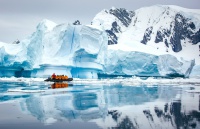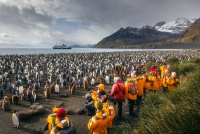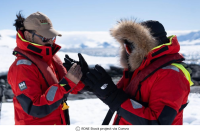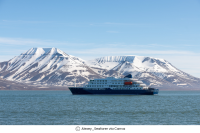-
Commonly Asked Questions About Antarctica
While we all know of Antarctica, do we really know about Antarctica? The icy white continent remains an elusive dream for many, with not much known. And with intrigue, also comes the hesitation to visit. To draw out the hesitation and make the remotest continent a bit more accessible and open, we googled some of the most commonly asked questions about Antarctica and got them answered by our in-house polar expert!
PS: Did you know Polar Bears don't live in Antarctica? Read on to know more of these facts!

Where is Antarctica?
We really are starting with the basics! Antarctica is Earth's southernmost and least-populated continent and is located close to Chile, Argentina, South Africa, New Zealand, and Australia. Situated almost entirely south of the Antarctic Circle and surrounded by the Southern Ocean, it contains the geographic South Pole.
PS: Did you know? The south magnetic pole is constantly shifting due to changes in Earth's magnetic field.
How big is Antarctica?
Antarctica is the highest, driest, coldest, windiest, and brightest of the seven continents. It is roughly the size of the United States and Mexico combined, twice the size of Australia, and 50 times larger than the UK!

Where did the name Antarctica come from?
While the first fully authenticated landing on Antarctica happened only in 1895, the idea of Antarctica was born hundreds of years before anyone actually approached it. Ancient Greek philosophers knew about the Arctic from sailing voyages, descriptions, and stories. They called it Arktos, "The Bear", named for the constellation of the Great Bear. By that time, it was proven that the world was a sphere and so they had concluded that there should be something at the pole opposite the Arctic to balance the world out. They called this undiscovered land mass antarktikos/antarcticus, meaning "opposite the bear". That's where the name Antarctica came from and the continent started appearing on the world map.
Who legally owns Antarctica?
Antarctica doesn't belong to anyone or any country, it truly is no man's land. Instead, the white continent is governed by a group of nations in a unique international partnership. The Antarctic Treaty, first signed on December 1, 1959, designates Antarctica as a continent devoted to peace and science, with zero military presence. We'd love to live here permanently!
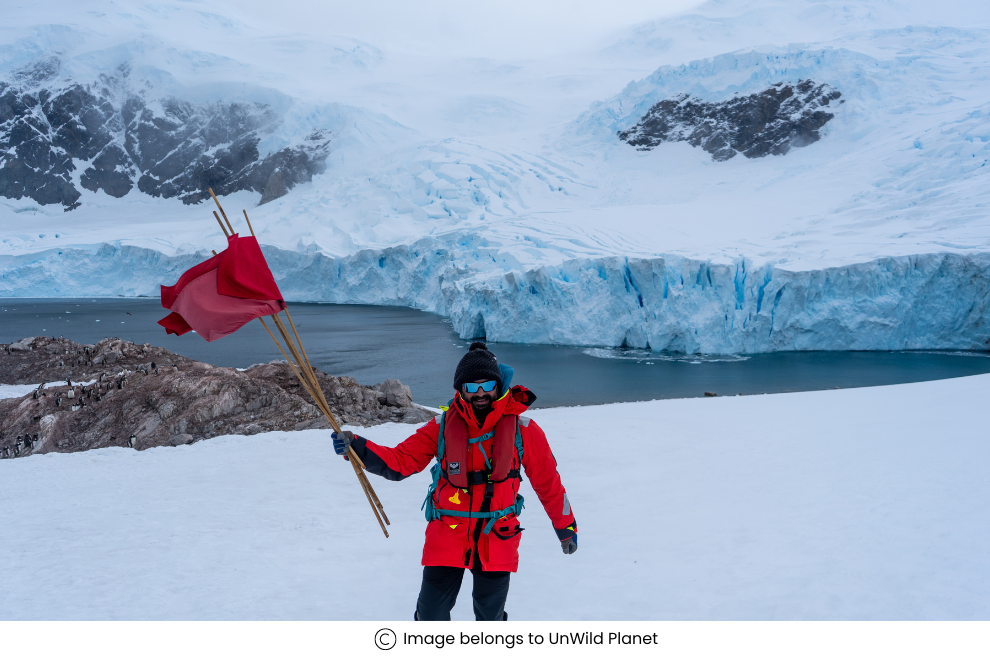
Are there any permanent residents in Antarctica or does the continent have any natives?
Unless you are talking about penguins and whales, there are no natives or permanent residents in Antarctica. There are research bases and settlements that look like towns, but people arrive here and stay for only about 3 to 18 months. The purpose of these bases is to understand global environmental issues including climate change, ozone depletion, sea level rise, etc., so if you aren't part of the scientific or support teams you can't really visit or stay back.
Are there any cities in Antarctica?
Antarctica is unlike normal continents, there are no cities, towns, or even roads here. It doesn't even have a capital city! The only buildings or settlements on the continent are the 70 scientific research centres belonging to 30 different countries. However, they aren't easily accessible or open to tourists.

Do I need a visa to go to Antarctica?
Since no country owns Antarctica, no visa is required. However, you do need a visa from the country where your Antarctic expedition will depart, which is usually Argentina, Chile and South Africa.
What languages do you speak in Antarctica?
Since there is no native population in Antarctica, there is no official language. However, the most widely spoken languages on the continent are English and Russian due to a large number of scientists speaking the tongue.

How do I visit Antarctica?
Despite its seemingly impossible remoteness, Antarctica has never been so accessible to travelers. Below are the two ways you can visit Antarctica:
From Argentina
The majority of Antarctic voyages depart from Ushuaia, Argentina (a three-and-a-half-hour direct flight from Buenos Aires). The voyages departing from here access Antarctica by sea and traverse the infamous Drake Passage, a 1,000 kilometres long body of water that separates South America from the Antarctic Peninsula. Depending upon conditions, this crossing often takes a day and a half at sea and is a prime opportunity to view iconic wildlife such as the great wandering albatross.
From Chile
Alternatively, travellers can also skip the Drake Passage and fly out of Punta Arenas, Chile directly to an airstrip on an island adjacent to the Antarctic Peninsula. From there, expedition ships bring you face-to-face with glaciers and penguins just a few hours after departing Punta Arenas.
When can I visit Antarctica?
The best time to visit Antarctica is from late spring to early fall, which in the southern hemisphere is from October to March.

What can I do in Antarctica?
Expedition trips to Antarctica provide daily opportunities to get off of the ship and into the environment. While sailing the coastlines of the Antarctic Peninsula, the Falkland Islands, and South Georgia, most voyages make landfall at least once, during which you can walk amongst penguins and seals, hike up to vantage points to take in the immensity of the wilderness, or just sit contemplatively in a cathedral of glaciers, icebergs, and wildlife. Additionally, you’ll go on daily Zodiac cruises (small, inflatable watercraft that hold just 12 people) to explore beautifully sculpted icebergs, marine life including seals, penguins, and whales, and infrequently visited areas.
Which are some of the places I can visit in Antarctica?
Some of the places you can visit in Antarctica are
- Melchior Islands
- Port Lockroy
- Cuverville Island
- Damoy Point
- Half Moon Island
- Pendulum Cove
- Penguin Island
Each competing with each other to take your breath away!

What animals live in Antarctica?
Antarctica is home to a surprising amount of animals! You can find numerous species of
- Penguins
- Seals
- Marine birds
- Whales
And a whole lot more! But despite what some may assume, there are no polar bears in Antarctica – those are found only in the Arctic.
When did Antarctica freeze?
Scientists have determined that Antarctica froze around 34 million years ago. However, scientists have found fossilised evidence that before then, lush rainforests existed in Antarctica during the middle Cretaceous Period.
What are the jobs available in Antarctica?
We would love to move to Antarctica! However, you can only live there if you have a job and the jobs fall into two categories - scientific and support (Cook, electrician, carpenter, boat handler, mechanic, plumber, radio operator, doctor, driving officer, firefighters, etc.)
Does Antarctica have electricity?
Yes, it does. The research bases are usually provided by diesel-powered generators but increasingly stations are installing wind turbines to generate supplementary electricity.

Is there wifi in Antarctica?
We know you'd love for this answer to be yes but despite having electricity, there is no public wifi in Antarctica (haha!). The white continent is all about digital detox. However, certain cruise ships offer limited connectivity.
How physically demanding is a trip to Antarctica?
The good news is that you do not have to be very fit to visit Antarctica. However, a good level of fitness and physical health will make your trip easier.
Are children allowed to go to Antarctica?
Children are allowed in Antarctica on tourist ships and boats. However, given the nature of the trip and the remoteness of the location, it's not a common sight!
Side note: Antarctica does have two small schools on the Argentinian and Chilean research bases, for children of parents who work here.
While these questions bust a lot of myths about Antarctica and tell you facts, they also highlight Antacrtica’s fragile ecosystem and the need to preserve it. As travel operators and tourists, it’s our responsibility to ensure that we play a part in the continent’s preservation. Controlled tourism in Antarctica that is regulated by Antarctic Treaty and International Association of Antarctica Tour Operators (IAATO) helps turn tourists into ambassadors of the white continent. And with no native population, this is an important step as it creates a global community of people ready to support and fund its preservation.
At UnWild Planet, we strictly follow the guidelines laid down by IAATO by:
- Working with partners who follow the guidelines set by IAATO
- Ensuring that our expeditions are always in small ships, with a maximum capacity of 70 guests, giving us a better chance at monitoring our footprints
- Educating travellers on Antarctica's ecosystem by ensuring that each of our expeditions is accompanied by a team of researchers, scientists, conservationists, and explorers
- Continuously monitoring the eco pollution level of the vessels we work with
When you are planning a trip to Antarctica, ensure that your tour operator adheres to the above guidelines before booking with them!
To know more about our expeditions to Antarctica, connect with us
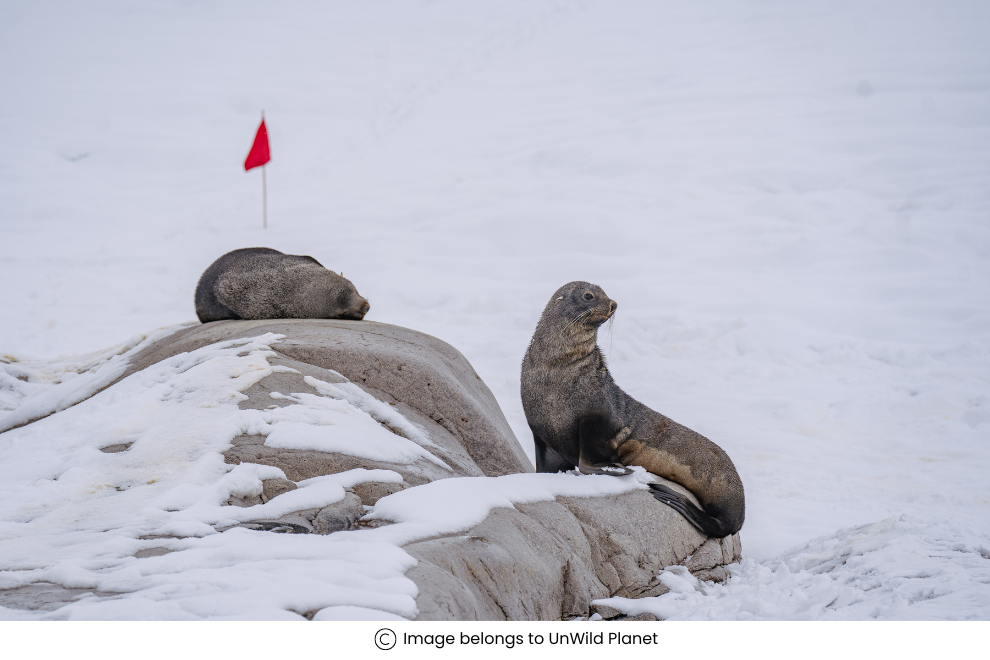
Ready to embark on your next adventure? Fill out the form below and let our experts curate your dream getaway!
All Fields are mandatory*-
Related Tours
-
Recent Blogs

